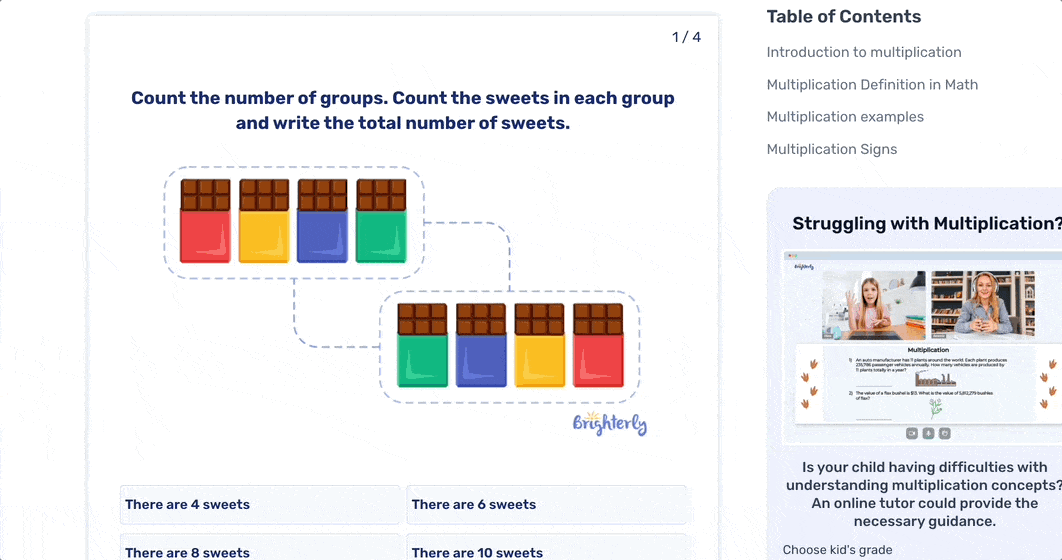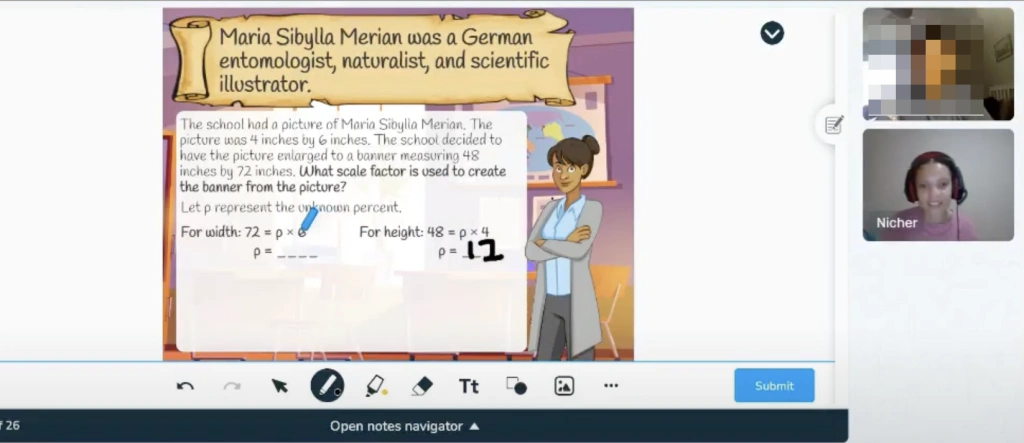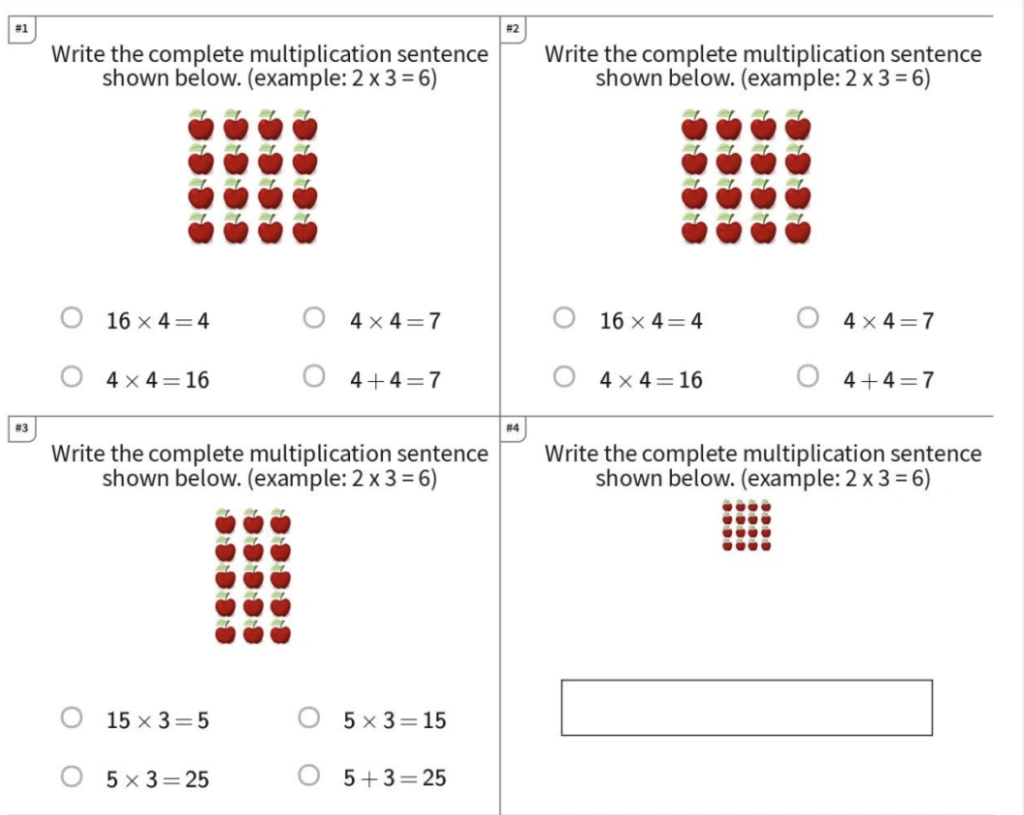How to Memorize Multiplication Tables: 17 Tips for Your Kids
reviewed by Jo-ann Caballes
Updated on November 7, 2025
Sooner or later, all parents face the question: “How to memorize multiplication tables with my kid without this turning into a family nightmare?” As I’ve seen in my experience in teaching math to elementary and middle school students, these 17 practical tips for memorizing a mathematical table can do wonders in your endeavors.
Key points
- The best way to memorize multiplication tables is daily repetition and gamification, even if the study session is just 5-10 minutes a day.
- For daily repetition, nothing beats 1:1 sessions with a real expert. With a Brighterly math tutor, you can speed up multiplication table memorization at an affordable price. They will create a personalized curriculum, as there’s no one-size-fits-all solution when it comes to learning math.
- Fun ways to memorize times tables faster include songs, real-life examples, flash cards, and referring to different everyday objects.
Steps in learning multiplication tables
How to prepare for learning multiplication tables
For preparation, collect all the materials that’ll be necessary for learning. They can include games, flashcards, books, copybooks, and subscriptions to relevant educational websites. All these resources can be handy to guide you and your child through the process of how to learn times tables.
Note: Make sure you select tools and materials that are exciting and engaging to boost your child’s motivation and willingness to learn. If you’re hesitating about which math learning website to choose, opt for the best math learning websites.
First meeting: The start of memorizing multiplication tables
When you’re first getting started, introduce the multiplication table to your child and explain the need for learning it. Focus on how we use math skills — and especially multiplication — in all daily activities to spike their curiosity.
If your kid still keeps asking, “How to learn my multiplication tables fast?”, try to break down the tables into smaller chunks and show them patterns and interconnections from the beginning.
Daily routine for learning multiplication tables
Daily learning is key to optimal results. Your child may be resistant to this idea at first, but that’s why you as a parent should insist on regular work.

Unfortunately, there is no magic pill for how will you make a child memorize the table of multiplication. Only consistent study sessions can make real progress. And trust me: once you make memorization a routine, you’ll see the first results within weeks.
To boost the results, try using examples from real life, such as computer science, or going to real places for practice, like shopping in Costco. But don’t do what doesn’t feel natural: parents on Reddit still benefit from old-school solutions, even if they feel boring for most.

Relaxing days while memorizing multiplication tables
After the first week, don’t forget to give your child a few relaxing days. If you feel like it’s dangerous to take a long break, you can offer a day off after each multiplication table, alternatively. Make your choice based on your child’s study pace.
💡Remember: While there are no tricks on how to memorize times tables in one day, your child can learn the whole table in less than a month if you alternate daily practice with well-deserved breaks.
Regular repetitions for learning multiplication tables
Finally, to solidify newly gained knowledge, consider randomly asking your kid to solve multiplication and plan on reviewing the tables together. As one of the ways to do this, ask your kid to count cars and multiply them by the number of days in a week on the way to school.
How to memorize the multiplication table? 17 best tips
- Work with a qualified math tutor
- Print and use free math multiplication worksheets
- Give your child short tests
- Explain the logic behind multiplication
- Use memory tricks
- Implement regular practices
- Make an easy start
- Start repeating aloud
- Adopt an interactive approach
- Create games to learn times tables
- Leverage visual memory
- Use poems
- Start to learn tables step by step
- Apply simplifying tips
- Start lessons with real-life objects
- Teach the addition method
- Try finger-counting
#1 Learn multiplication tables fast with a qualified math tutor
Studying with a private tutor is my top tip on how to learn multiplication fast. Backed by pedagogy training, these professionals understand how a child’s brain works to create personalized programs tailored to their specific learning style. Data show that high-dosage tutoring (3 times/week) helps students improve learning results by 3-15 months worth of knowledge, depending on their grade level.
💡On the benefits of tutoring, there are seven reasons why it accelerates learning progress compared to unguided study. While there’s still no trick for those asking how to memorize multiplication tables in 1 hour, a great tutor can reduce study times to a few weeks.
How to learn multiplication tables fast with Brighterly tutors
With the help of the Brighterly math and reading platform, your child will get personalized lessons with a professional tutor who uses proven memorization techniques. The tips they provide will make learning the multiplication chart both fast and enjoyable, creating a lifelong love for math.
Brighterly math and reading tutors understand the importance of building a math foundation before memorizing a multiplication table. Most of them have 5+ years of experience in teaching kids, so they can find a suitable approach for any student. These are not just words — the effectiveness of their methodology is testified in the endless positive reviews by parents on Trustpilot.

Once you enroll in the Brighterly math program, you get access to the tutors who know tricks to learn multiplication tables not only fast but also permanently. With this option, this knowledge will be carved into their subconscious forever.
🤩To make lessons both effective and fun, the teachers at Brighterly use games, quizzes, and other interactive methods to get your child interested in new knowledge.
Brighterly’s philosophy is that quality education should be accessible to everyone, so 1:1 tutoring sessions come at a very affordable price that starts at $17.30/lesson with a 12-month plan that includes three classes/week. On request, you can get a customized plan to learn times tables from day one!
Note: Brighterly math tutors customize 1:1 lessons to meet your child’s unique learning style in each math class. During the first free session, the tutor will analyze your kid’s knowledge strengths and gaps to prepare an individualized curriculum aligned with both the student’s needs and the US state standards.
#2 Easy way to learn multiplication tables with multiplication worksheets
Worksheets are excellent tools to drill multiplication tables regularly. They work great for working independently at home, helping your child recall the knowledge outside of classes and practice it at their own pace.
For those wondering, “Is there a trick to learning multiplication?”, the Reddit community frequently mentions that repeated, out-of-class practice is the key to success. So, get yourself fun worksheets to practice multiplication regularly, and you won’t feel how easily this math operation becomes natural to you!

How to teach a child to memorize multiplication tables with Brighterly worksheets?
Use Brighterly multiplication table worksheets to combine repetition with variety while memorizing multiplication tables. These structured worksheets help children practice actively, recognize patterns, and gradually store core multiplication facts in their long-term memory, all while having fun.
Download for free Brighterly multiplication tables 1-12 printable worksheets to make learning easy and exciting. The featured math problem tasks feature tricky retrieval, fact groups trivia, real-life examples, and other interactive activities.
#3 Memorize multiplication tables with short tests
The third easiest way to learn multiplication tables is to use interactive math tests. They make learning more effective, as kids practice in a structured format, can see their success rate, and track their progress.
Note: Students using interactive digital tools, such as online practice, improve math test scores by 24.2%, compared to an increase of 8.3% for those relying on traditional methods. So, to solidify your child’s knowledge, look for interesting online test questions.
Brighterly offers free math tests for grades 1-9 to diagnose your child’s level and identify knowledge gaps. Multiplication table tests inside help students reinforce learning and boost confidence in math.

#4 Help your kid memorize the multiplication table through logic and principles
For some kids, understanding the logic and principles behind math can significantly boost their multiplication skills. So, instead of looking for the easiest way to memorize multiplication table (which is solely memorizing), try to find the answer to their “why” first.
In the multiplication table, there are specific principles and logical patterns behind each line. When you explain them to a child, it can eliminate the big distraction to their thinking, establish the required connection in their learning, and help reinforce these patterns through practice.
#5 Memorize multiplication tables by leveraging memory techniques
Memory techniques like chunks, visualizations, and pattern recognition are great tricks to learn multiplication tables:
- Chunking method: Break multiplication into small chunks.
- Visualization: Make the multiplication task a fancy story.
- Pattern recognition: Math is all about patterns, and the best way to learn multiplication tables is to understand those patterns.
These strategies can help you learn the material quickly, as they simplify the educational process. Also, modern parents share multiple tips for memorizing multiplication tables on Reddit.

#6 Learn a multiplication table by implementing regular practices
Continuous exercise is a crucial part of memorization. Try to spend at least half an hour each day repeating what you have learned before and acquiring new tables. It’s an easy way to memorize multiplication table.
#7 Memorize multiplication tables and make an easy start
Don’t make math hard from the beginning to help your child’s math learning. Be playful, joyful, and real so that the student will associate multiplication with these feelings from the start.
To keep things simple, start to practice times tables with 2, 5, and 10. These are usually the easiest but most helpful in building confidence. Then, you can move forward to other tables once the child feels comfortable.
#8 Easy way to learn multiplication table: Start repeating aloud
Reciting the multiplication table out loud can be a fun way to memorize it. The more children repeat numbers and patterns, the better they will memorize them. Try this method the next time your kid struggles with multiplication!

#9 Learn multiplication tables fast by adopting an interactive approach
No one likes boring lessons, so adopting interactive practices and tools like pictures and math apps for kids can make a difference and spark their natural curiosity. To find the right tool, capitalize on your child’s interests to motivate them:
- If they like video games, look for game-based math websites.
- If they prefer singing and dancing, incorporate those practices into your learning routine.
Also, Reddit parents suggest that flashcards are a great way on how to teach a child to memorize multiplication tables.

Whatever you choose, find your way to make math fun for your child. If studying feels like playing, they’ll be interested and naturally ask for more lessons.
#10 Memorize multipliсation by creating games
If you wonder how to teach multiplication tables, try creating your own math games. For example, you can prepare the multiplication table with gaps and task your child with filling in the missing numbers. Or, you can ask your child to make a table for you so they can think about patterns and develop a strategy for them.
#11 Learn multiplication tables easily with visual memory
Boosting visual memory is a simple way on how to learn multiplication tables. Try using the Pythagoras square to ensure your child visualizes and understands the concept behind multiplication.
#12 Easy way to learn multiplication tables: Use poems to memorize
You can try to use math-related poems to teach the multiplication table. This unusual way works very well with more creative kids.
For instance, here is the “Table of 9” children’s math rhyme you can use:
Nine, eighteen, twenty-seven, thirty-six,
Learning nines is a nifty fix!
Nine, eighteen, twenty-seven, thirty-six,
Practice hard, and you’ll get your tricks!
#13 How to memorize multiplication tables for kids step by step
The organized method of working through the tables column by column is another way to learn multiplication tables, as it suits most kids. The best way to learn times tables is to simplify the process by showing your child the concept of interchangeable factors. Demonstrate that “4 times 5” and “5 times 4” lead to the same result, which is 20. This simple tip helps memorize multiplication tables faster.
Foundational concepts for learning multiplication tables
- First factor: A number that will be added a certain number of times.
- Second factor: A number showing how many times the first factor must be added to obtain the product.
- The product: The value obtained from repeated addition, showing what this operation is equal to.
#14 Best way to memorize multiplication tables fast: Use simplifying tips
Multiplication tables have many interconnections and regulations, so using simplifying tips will make memorizing easier.
The 3 best tips for quick multiplication learning
- If one of the factors is 2, just add the same number to the second number: 6*2 = 6 + 6 = 12.
- Learn the multiplication table by 5 easier because its results are half as small as in the column by 10: 10*6 = 60, so 5*6 = 30.
- For an operation with 9, add 0 to the original number and subtract the same number: for 6*9 (60 – 6) = 56.
#15 How to learn multiplication tables: Start lessons with real-life objects
Lessons with real-world physical objects are always fun. And the best part is that it’s easy to start. But be ready: your kid may like this method so much that they start taking these objects to math class at school!
To start using real-life objects, you can take out all the toys from the basket and divide them into pairs. If you are teaching your child the 2 times table, give them 4 pairs of objects to make 8, so 2*4 = 8. Eventually, they’ll find out that 4 sets of 2 are 8.

#16 How to memorize multiplication tables fast: Teach the addition method
The easiest and best way to memorize times tables is to use the addition method. Frequently, multiplication made with addition significantly boosts memorization, so it’s worth a try.
For example, if you want to multiply 5*5, you can add that number 5 times to get the answer: 5 + 5 + 5 + 5 + 5 = 25, which is 5*5 = 25.
#17 Learn multiplication tables by finger-counting
For the times table by 9, your kid can start practicing finger-counting instead of addition as a memorization technique. Here is how to practice this easy way to memorize multiplication table:
- Spread all 10 fingers in front of you.
- To calculate 9*1, lower the 1st finger, or the left little finger.
- What’s left? 9 fingers. That’s your answer!
- For 9*2, drop the second finger, or the left ring finger.
- What is left now? 1 finger and a space followed by 8 fingers. It’s 18, your answer!
Continue this method as it works up to 9*9 (8 and 1 or 81).
How to memorize multiplication tables in one day?
While it’s impossible to memorize multiplication tables in one day, you can combine several tips from the list above to help your child do it within a couple of weeks. My practice shows that integrating 1:1 tutoring with worksheets, frequent tests, and game-based learning is usually the best combination and the fastest way to learn multiplication.
Note: The Brighterly math program focuses on a personalized learning approach as each kid requires a special touch. Book 1st free class to see what difference an experienced tutor can make!
How long does it take to memorize multiplication tables?
Usually, it takes a month or two to memorize the multiplication table. The actual time depends on:
- Current math skills
- Lesson frequency
- Study approach
- Student’s attitude
- Chosen learning tips
- Individual circumstances
Keep in mind that repetition and practice are part of the process. Speaking of what is the easiest way to memorize multiplication tables, I’ll suggest real-life calculations, as they help children understand the importance of knowing math in their lives.
Why should children memorize the multiplication table?
Children should memorize the multiplication table to build fundamental math skills that will help them solve complex life problems more easily. Knowing math lets them excel at school and succeed throughout life in real-life situations and careers. It also helps acquire confidence through trust in your knowledge.
It’s essential to note that memorizing a multiplication table not only makes doing math faster. Indeed, it helps grow memory functions, which are crucial for young children’s development.
Mistakes in learning multiplication facts
The most common mistakes parents make when helping their children learn the multiplication table are:
- Failing to understand the concept behind multiplication
- Trying to memorize everything at once
- Starting too late in the school year
- Not exercising daily
Instead, an easy way to learn multiplication tables is to explain the logic, tackle one chart at a time, start early, practice regularly, and have days off in between. Working with an expert tutor also helps tremendously.

How to teach multiplication to struggling students?
The most effective way to teach multiplication tables to struggling students is to hire a math tutor who has the relevant qualifications. They can develop a customized learning plan and educational materials that address the specific requirements in an efficient, yet respectful and considerate manner.
Additionally, you can look for worksheets to practice a multiplication table at home, math games that make its memorization fun, even for kids with learning challenges, and songs or rhymes to further facilitate the process.
What is the best trick to remember tables? Conclusion
The best way to memorize multiplication tables is to combine multiple techniques, like songs, visual aids, and worksheets, but make the practice consistent. You can also try a memorize multiplication tables game to make studying more entertaining. And if you want your child to learn how to multiply in a stress-free manner, Brighterly 1:1 tutoring is your best option.
With Brighterly, your family gets:
✅ Personalized, 1:1 tutoring matching the particular needs of your kid
✅ Expert math tutors who know how to meet the needs of any student
✅ Free math worksheets to practice multiplication skills daily
✅ Free math tests to track progress
✅ Affordable pricing to fit your budget
Ready to find out the easiest way to learn multiplication? Book free lesson to see why thousands of families choose Brighterly as the #1 math assistant for their kids.
















